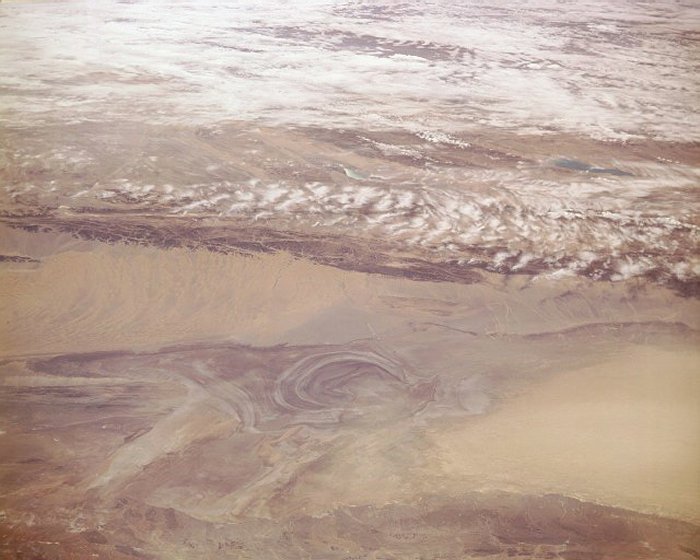Mysterious Disappearance Of Explorer Peng Jiamu In Lop Nur – The Wandering Lake
Ellen Lloyd - AncientPages.com - Peng Jiamu was a great scientist and explorer who vanished during an expedition in China's Lop Nur, the "Wandering Lake." It is a hostile place nicknamed Asia's Devil's Triangle. This unfriendly area has caused the deaths of hundreds of people.
Lop Nur. Credit: NASA
Despite several thorough large-scale rescue operations, his body has not been found until this day. His disappearance remains unsolved. Many scientists have died while working, but most of them are unknown to the public. Peng became highly famous after his disappearance. Peng Jiamu has been portrayed as a martyr ready to sacrifice himself for science.
The Quest For Lop Nur
Lop Nur, also called Lop Nor, a former saline lake in northwestern China, is now a salt-encrusted lake bed. It lies within the Tarim Basin of the eastern Takla Makan Desert, in the Uygur Autonomous Region of Xinjiang, and is one of the most barren areas of China.
Lop Nur is about 780 meters (2,560 feet) above sea level and covers an area of about 3,000 square kilometers (1,160 square miles). Once, it was the second-largest inland lake in China and an important station on the Silk Road.
In the latter half of the 19th century, the Lop Desert attracted many of the world's great explorers seeking to discover more about this vast geographic blank spot on the map. Lop Nor Lake, in particular, was the main target of their attention. It was recorded in Chinese history that a huge lake existed on the eastern side of the Tarim Basin. Despite the lake's size, however, no one knew exactly where the lake was located, and this mystery continued into modern times. Solving the mystery of where the lake was located would be a significant geographic discovery. This, of course, encouraged explorers worldwide to come and search for Lop Nur.
Lop Nur - The Wandering Lake Finally Found
In 1900, Sven Anders Hedin, a Swedish geographer, and explorer, planned to map out the Lop Desert in sectioned diagrams by traveling it from north to south. He thought that by searching for shapes similar to the lakes shown in historical maps, he would locate the former lake bed of Lop Nor. It turned out that he was right in his assumptions. As he traveled on, he soon found there had been indeed a lake. He knew this by the numerous seashells, the dense layer of salt, and a dead forest of poplar trees. With these clues, Hedin continued his search for the legendary lake. Hedin and his team encountered several ruins and also found traces of human life.
Satellite picture of the Basin of the former sea of Lop Nur. Image credit: NASA
The next year in 1901, Hedin returned to the site, where he found many written records on pieces of wood and paper. The manuscripts, written in both Chinese and Kharosthi scripts, were sent back to Sweden and deciphered.
Kharosthi script on wood, Niya, 3rd century AD, in the National Museum, New Delhi, India. Credit: Daderot - Public Domain
The manuscripts were related to the movement of troops during the Western Jin dynasty and included both private and official records and correspondences. It was also learned through an examination of the manuscripts that they were composed from around 265 to 330 and that the area had been called "Kroraina" by the locals (which was rendered as "Lou-lan" in Chinese). These manuscripts made it clear that the ruins were indeed the ancient city "Lou-lan." That led to the conclusion that the lake floor that Hedin saw was "the lake adjacent to Lou-lan," that is it was Lop Nor.
Sven Anders Hedin a great Swedish explorer who spent a lifetime investigating remote parts of Asia. This image is from his last expedition to Inner Mongolia. Credit: Public Domain
Hedin became well-known for proposing the "wandering lake" theory, positing that Lake Lop Nor in the Tarim Basin shifted location north and south over a cycle of 1500 years. He also discovered the ancient city of Kroraina (Loulan) on the shores of the Lake.
Lop Nur has had many names over the centuries - Salt Lake, Puchang Sea, and Peacock Sea among them. Since the Yuan Dynasty (1271-1368), it has been called Lop Nur. In Uygur, 'Lop' means a place having a vast expanse of water. In Mongolian, 'Nur' refers to a lake. 'Lop' and 'Nur' together mean a vast lake. However, it dried up in 1972 because of excessive human economic activities in the area.
Peng Jiamu - A Scientist Who Did Not Fear Lop Nur
Peng Jiamu was deeply dedicated to science. Born in Guangdong Province in 1925 and graduating in 1947 from the then Central University of China (now Nanjing University) as a biology student, Peng's life has been closely tied with scientific exploration in China.
In 1956, already a famous biologist at the Shanghai Institute of Biochemistry and Cell Biology, when Peng heard that the CAS would organize a massive expedition in Xinjiang, he immediately gave up his chances of studying abroad and filed an application.
Peng Jiamu, was a famed Chinese scientist who vanished during his expedition to Lop Nur. Image source
"I have a strong wish to explore the frontiers. I have the courage to pave a way in the wilderness," wrote Peng in his application letter to the then CAS President Guo Moruo (1892-1979).
In 1957, he was diagnosed with a malign tumor, but after recovering in Shanghai, Peng immediately returned to Xinjiang for further exploration.
Peng began his travels in the late 1950s. He participated in multiple scientific expeditions to northwestern China's Lop Nor desert, often described as one of the driest places in the world. Despite the harsh conditions, Peng did not hesitate to trek into the desert. He traveled thousands of miles on that trip by car, horse, donkey, and canoe. In 1980 Peng led a team of biologists, geologists, and archeologists to Lop Nor to conduct new research.
On June 17, several days into the journey, he abruptly disappeared from his camp after leaving a note saying he was going out to find water.
He never came back again…
The Search For Peng's Missing Body
When the Chinese learned about Peng's disappearance, they immediately responded by launching a rescue mission. The central government ordered the military to dispatch more than 10 planes, helicopters, and hundreds of soldiers to search for him.
Six police officers from Shanghai and the provinces of Shandong and Jiangsu were called to search with their police dogs.
The body of Peng was not found. In November 1980, another search team drove into the area for another attempt, but nothing was found.
What Happened To Peng Jiamu?
In his book "Travel with Peng Jiamu," Xia Xuncheng, Peng's associate and former director of Lanzhou-based Institute of Desert, CAS, recalled the search. One possibility is that a sand storm buried Peng. Between June 16 and 17, there was a wind of up to 10 degrees. "We found a camel buried, with just the lower part of one leg above the sand, just three days after it was lost," wrote Xia.
Another possibility is that loose soil hills buried Peng. Travelers and explorers often used the hills as protection against strong winds and sunshine, but the hills were prone to collapse.
The disappearance of Peng Jiamu remains a mystery. The great explorer and scientist have, after his death, become one of China's most beloved adventurers. People still hope his missing body will be recovered one day.
Every time archaeologists announce the discovery of a corpse in the region of Lop Nur, Peng's former colleagues and the people of China hope it belonged to the man who did not fear entering the unfriendly region of Lop Nur.
So far, his body remains undiscovered.
Written by Ellen Lloyd – AncientPages.com
Updated on August 24, 2022
Copyright © AncientPages.com All rights reserved. This material may not be published, broadcast, rewritten or redistributed in whole or part without the express written permission of AncientPages.com
Expand for referencesMore From Ancient Pages
-
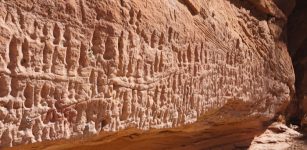 Story Behind A Huge Mysterious Ancient Rock Art Site In Central Queensland Revealed By Scientists
Archaeology | Sep 21, 2022
Story Behind A Huge Mysterious Ancient Rock Art Site In Central Queensland Revealed By Scientists
Archaeology | Sep 21, 2022 -
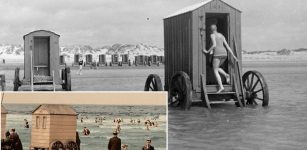 What Were Victorian Bathing Machines?
Ancient History Facts | Jun 9, 2018
What Were Victorian Bathing Machines?
Ancient History Facts | Jun 9, 2018 -
 Beautiful Ancient City Of Pisac In The Sacred Valley, Peru – Incredible Inca Ruins
Featured Stories | Jun 22, 2017
Beautiful Ancient City Of Pisac In The Sacred Valley, Peru – Incredible Inca Ruins
Featured Stories | Jun 22, 2017 -
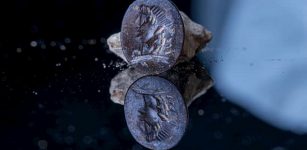 How Did A Rare 2,000-Year-Old Gem Seal Depicting God Apollo End Up In The City Of David?
Archaeology | Nov 5, 2020
How Did A Rare 2,000-Year-Old Gem Seal Depicting God Apollo End Up In The City Of David?
Archaeology | Nov 5, 2020 -
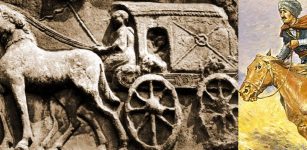 Struggle To Get Mail On Time Has Lasted More Than 5,000 Years – Part 1
Featured Stories | Jul 30, 2017
Struggle To Get Mail On Time Has Lasted More Than 5,000 Years – Part 1
Featured Stories | Jul 30, 2017 -
 3,000-Year-Old Stone Scarab Seal Depicting A Pharaoh Discovered In Israel
Archaeology | Dec 2, 2022
3,000-Year-Old Stone Scarab Seal Depicting A Pharaoh Discovered In Israel
Archaeology | Dec 2, 2022 -
 The Untold Story Of The Inca – Fire In The Sky – Part 1
Civilizations | Jul 2, 2019
The Untold Story Of The Inca – Fire In The Sky – Part 1
Civilizations | Jul 2, 2019 -
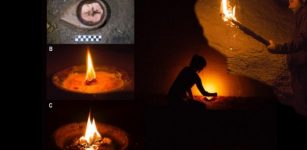 Paleolithic Cave Dwellers And Light They Could Get In Darkness
Archaeology | Jun 21, 2021
Paleolithic Cave Dwellers And Light They Could Get In Darkness
Archaeology | Jun 21, 2021 -
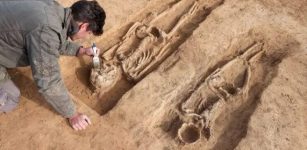 Mystery Of The Faceless Woman Found In A 1,000-Year-Old Royal Grave
Archaeology | Nov 7, 2023
Mystery Of The Faceless Woman Found In A 1,000-Year-Old Royal Grave
Archaeology | Nov 7, 2023 -
 DNA Reveals How The Vikings Changed Scandinavian Migration And Ancestry
Archaeology | Jan 5, 2023
DNA Reveals How The Vikings Changed Scandinavian Migration And Ancestry
Archaeology | Jan 5, 2023 -
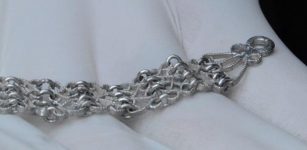 Rare Ancient Precious Artifacts Found In Rusovce, Slovakia
Artifacts | Sep 26, 2015
Rare Ancient Precious Artifacts Found In Rusovce, Slovakia
Artifacts | Sep 26, 2015 -
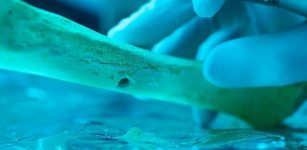 Cousin-Marriages Were Uncommon In The Ancient World
Archaeology | Sep 14, 2021
Cousin-Marriages Were Uncommon In The Ancient World
Archaeology | Sep 14, 2021 -
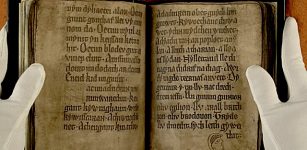 13th Century Black Book Of Carmarthen: Erased Poetry And Ghostly Faces Revealed By UV Light
Artifacts | Apr 4, 2015
13th Century Black Book Of Carmarthen: Erased Poetry And Ghostly Faces Revealed By UV Light
Artifacts | Apr 4, 2015 -
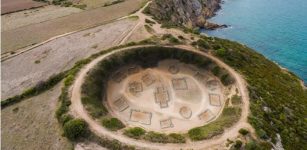 LIDAR Discovers Circular Iron Age Village At Cap d’Erquy, France
Archaeology | Apr 4, 2024
LIDAR Discovers Circular Iron Age Village At Cap d’Erquy, France
Archaeology | Apr 4, 2024 -
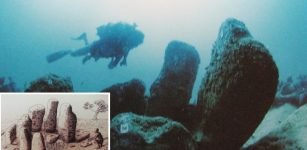 Atlit Yam – Fate Of The 9,000-Year-Old Underwater Megalithic Site With A Huge Stone Circle
Featured Stories | Jun 14, 2021
Atlit Yam – Fate Of The 9,000-Year-Old Underwater Megalithic Site With A Huge Stone Circle
Featured Stories | Jun 14, 2021 -
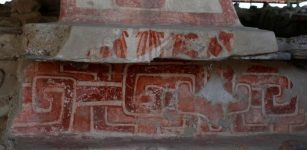 Teotihuacan’s Puzzling Red Glyphs Could Be Unknown Ancient Writing
Archaeology | Sep 22, 2020
Teotihuacan’s Puzzling Red Glyphs Could Be Unknown Ancient Writing
Archaeology | Sep 22, 2020 -
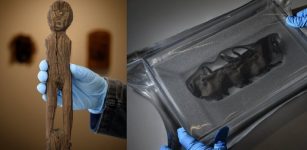 Ancient Artifacts Hidden Beneath The Ice In Danger As Glaciers Are Melting
Archaeology | Oct 19, 2020
Ancient Artifacts Hidden Beneath The Ice In Danger As Glaciers Are Melting
Archaeology | Oct 19, 2020 -
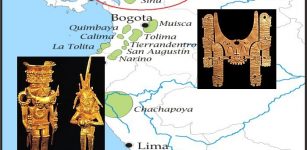 Malagana Remarkable Sophisticated Goldwork: Legacy Of Colombian Pre-Hispanic Culture
Artifacts | Nov 14, 2018
Malagana Remarkable Sophisticated Goldwork: Legacy Of Colombian Pre-Hispanic Culture
Artifacts | Nov 14, 2018 -
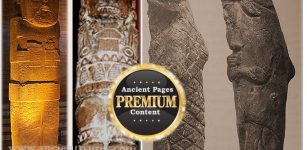 Mysterious Water Indians: Brotherhood Of Semi-Divine Beings Described As Half Men And Half Fish
Featured Stories | Jul 8, 2014
Mysterious Water Indians: Brotherhood Of Semi-Divine Beings Described As Half Men And Half Fish
Featured Stories | Jul 8, 2014 -
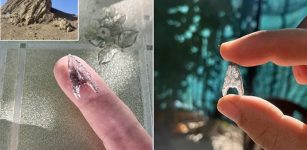 Obsidian Flake From 45,000-Year-Old Tool Unearthed In Armenia
Archaeology | Jul 18, 2022
Obsidian Flake From 45,000-Year-Old Tool Unearthed In Armenia
Archaeology | Jul 18, 2022

